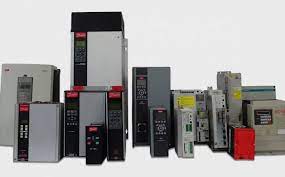Are young children well suited to the use of Modern technologies are very powerful because they rely on one of the most powerful genetic biases we do have – the preference for visually presented information. The human brain has a tremendous bias for visually presented information. Television, movies, videos, and most computer programs are very visually oriented and therefore attract and maintain the attention of young children. When young children sit in front of television for hours, they fail to develop other perceptions. But the technologies that benefit young children the greatest are those that are interactive and allow the child to develop their curiosity, problem solving and independent thinking skills.
Technology plays a key role in all aspects of American life which will only increase in the future. As technology has become more easy to use, the usage of it by children has simultaneously increased. Early childhood educators have a responsibility to critically examine the impact of technology on children and be prepare to use technology to benefit children. Children educators must be more responsible in bringing a change in the lives of children and their families.
A teacher’s role is critical in making good decisions regarding the use of technology in order to achieve potential benefits. Choosing the correct software is quite similar to choosing the perfect set of books for a classroom. Teachers should take the advantage of computers to introduce new teaching and development strategies. Computers are intrinsically compelling for young children. The sound and graphics attract a child’s attention. An appropriate software engages children in creative play, mastery learning, problem solving, and conversation. Children control the pacing and the action.
Every classroom has its own guiding philosophies, values, themes and activities. Early childhood educators should promote equitable access to technology for all children and their families. Modern technologies are very powerful as they rely on one of the most powerful biases we have. The problem with this is that many of the modern technologies are very passive. Because of this they do not provide children with the quality and quantity of crucial emotional, social, cognitive, or physical experiences they require when they are young.
Unfortunately, technology is often used to replace social situations but it should used to enhance human interactions. During the current decade, research has moved beyond simple questions about technology. Very young children are showing comfort and confidence in handling computers. They can turn them on, follow pictorial directions, and use situational and visual cues to understand and reason about their activity. Typing on the keyboard does not seem to cause them any trouble; in fact, it seems to be a source of pride. Thanks to recent technological developments, even children with physical and emotional disabilities can use the computer with ease. Besides enhancing their mobility and sense of control, computers can help improve self-esteem.
Thus the exclusive value of technology is no more in question. Research shows that what is solid for children is not merely what is physical but what is meaningful. Computer representations are often more manageable, flexible, and extensible. To add more there are a number of specialized programs that allow children with certain information-processing problems. To get a https://techsolutionstips.com/ multimedia presentation of content so that they can better understand and process the material. Even now there are a number of good software programs with a primary educational focus on mathematics or reading. These programs, which are very engaging, motivate children to read better and learn how to solve math problems. When information is present in a fun and way. it is a lot easier than looking at a single page that has a bunch of columns of numbers you’re suppose to add up.


